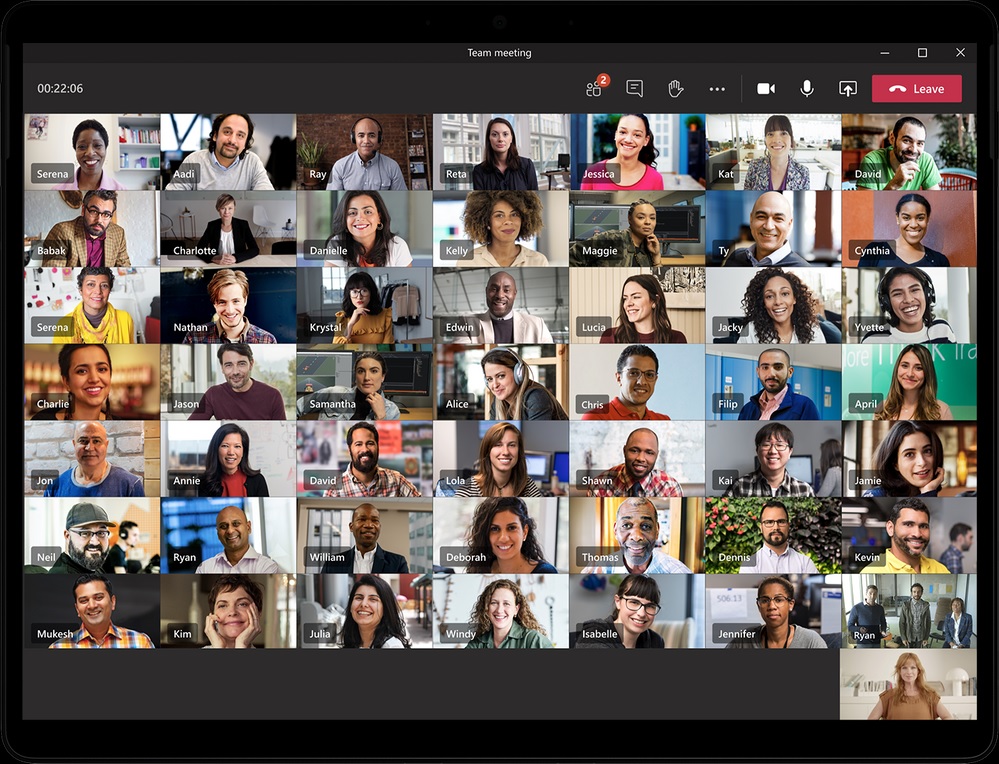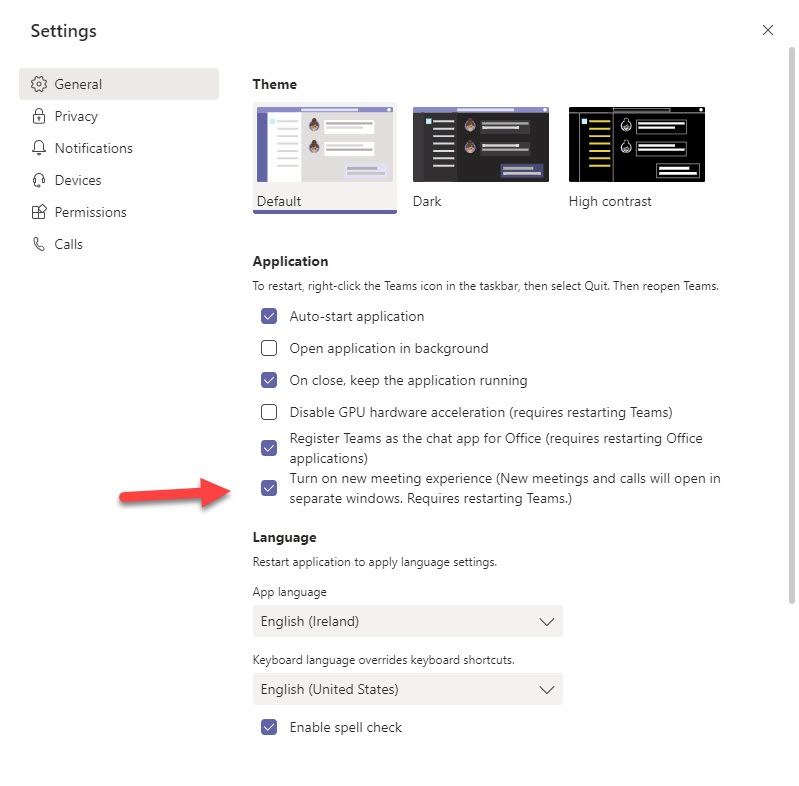Teams 7×7 Gallery View for Meetings Goes to Preview
The Joy of Seeing Everyone
In June, Brad discussed the need for Teams to match the 7 x 7 grid view supported by Zoom. It’s a competitive need not to be perceived as a laggard in the video conferencing space at a time when home working makes remote conferences a necessity. Simply put, it’s cool to be able to see all your colleagues, even if nature of the beast means that the resulting images in a large gallery view are so small that you might not be able to tell who’s who.
Teams started out with a 2 x 2 view for participants in video calls and increased this to a 3 x 3 view in April. At the time, Microsoft acknowledged that 3 x 3 wasn’t enough and Teams needed more, Microsoft then gave some hints that Teams would soon support a 7 x 7 (49 people) view in a interview given by CVP Jared Spataro.
Large Gallery Coming for Teams
Today, Office 365 notification MC217716 says that the 7 x 7 large gallery view (Figure 1) will roll out in preview to Teams desktop clients in early July. Microsoft is targeting full availability by the end of August, including access for the Windows and Mac desktop clients and the Teams iOS and Android clients. There’s no support for large gallery view in the Teams Linux or browser clients.
Processing Participant Feeds
The large gallery view cannot be turned on by default. Instead, users opt to use the view as a setting when a video meeting is active. When the option is chosen, Teams dynamically rearranges the streams for participants who have a video feed enabled to make best use of the available screen. If 20 people with video turned on are in a meeting, you might see a 4 x 5 arrangement; if 30 are present, it might be 6 x 5. As new participants join a meeting or participants turn on their video, Teams adjusts the layout so you might get more images in one or two columns in the grid.
Participants can switch in and out of large gallery view at any time to revert to the “normal” 3 x 3 view where the last nine speakers are shown. Large gallery view is only available when more than 10 participants are in a meeting.
Technical Challenges
Bringing together so many video streams is a technical challenge. It’s important not to require large amounts of high-quality bandwidth and to reduce the need for processing on participants’ devices. Microsoft has an advantage in some respects in that its datacenters have huge processing capacity, meaning that it’s possible for Teams to collect and amalgamate inbound streams before pushing out an integrated feed to participant workstations.
Microsoft says that they will deliver “a network-optimized client video experience that works on multiple device categories” and while they don’t say how they’d do this, it’s logical that some server-side processing will occur to take the load off mobile devices at the very least and to make sure that large gallery view can only work on heavy duty PCs.
Multi-Window Dependency
The only dependency Microsoft has identified is the need for users to turn on Teams multi-window support. In other words, you’ve got to be able to pop-out a meeting window for the view to be projected there. The traditional integrated Teams (all in one window) doesn’t support the large gallery view.
Multi-windowing is enabled in Teams client settings (Figure 2).
Popular with Some
Some users will think the large gallery view is great. Others will be horrified. I don’t like the large gallery view as I think the images are too indistinct to be worthwhile. I also find the amount of movement that the eye detects over so many participants to be distracting. But I’m probably not the audience Microsoft is going after here. The education sector is much more important, and teachers will probably love the chance to keep a close eye on all their students. Good luck to them!





